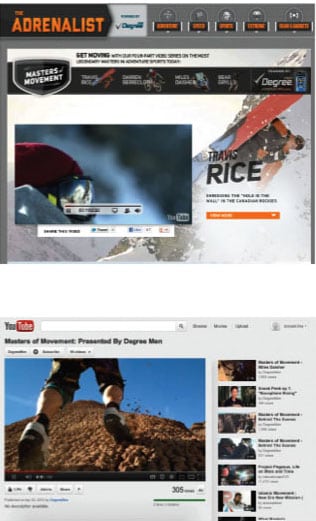 This summer The New Yorker started to experiment with sponsored content, or what is commonly referred to as “native advertising.” The magazine’s website, for example, now includes a native ad from IBM about five steps to building a better cloud, written by Frank De Gilio, an IBM engineer. The New Yorker is just the latest traditional media brand to cultivate native advertising inventory. Other legacy publications, such as Forbes and The Atlantic, are also in the fray, not to mention myriad social networks that are creating new advertising platforms.
This summer The New Yorker started to experiment with sponsored content, or what is commonly referred to as “native advertising.” The magazine’s website, for example, now includes a native ad from IBM about five steps to building a better cloud, written by Frank De Gilio, an IBM engineer. The New Yorker is just the latest traditional media brand to cultivate native advertising inventory. Other legacy publications, such as Forbes and The Atlantic, are also in the fray, not to mention myriad social networks that are creating new advertising platforms.
Broadly speaking, native advertising is defined as advertising content that follows the natural editorial form and function of the environment in which the ad is placed. It could encompass social media ad products, publisher integrations, content-syndication services and whatever else media labs are cooking up to spur the market. The ads could feature text, audio and, with growing frequency, video.
Indeed, after percolating for the last few years, native advertising is starting to come to a boil. And PR pros—conditioned to generating “earned” media on behalf of their clients—are increasingly being tasked with creating and distributing these types of ads, which are a form of paid advertising.
“It’s still a developing space for us,” said Corey Thibodeau, director of digital media at Weber Shandwick, adding that the appetite among clients for native advertising has started to accelerate in the last year or so. “We’re trying to make sure we understand the new technologies out there.”
He added, “At the center of it all is our theory that we want all of our brands to be publishers in their own right and that’s why in a lot of cases we’re building out branded content and then finding the right publishing channels to distribute that message.”

LOWER THE VOLUME
In the early days, native advertising was based more on volume, but the medium is increasingly about sophisticated ways of creating content that is relevant to the brand and caters to an appropriate audience.
“It starts with knowing the audiences that our brands want to reach, and finding out if they are reaching that audience through digital channels currently,” Thibodeau said. “Once we map out that audience, that’s when we start to build out the branded content and find the right publishing channels.”
For example, Weber Shandwick developed native ads that originated on The Adrenalist, a microsite featuring Degree for Men deodorant products.
In addition to running on degreedeodorant.com, the content also ran on Facebook, Twitter and media vehicles such as Men’s Health.
Thibodeau said it is critical that the content in native ads focus on the desired audiences’ lifestyles and not come across as a product pitch.
DON’T GET BURNED
Matthew Greenberg, VP of content strategy at Social@Ogilvy, stressed that as PR pros develop more native ads transparency is paramount.
“The surest way to make a native ad unsuccessful is when you try to sell something,” Greenberg said. “It’s not in the interest of the brand, the publisher or the agency. You don’t get a lot of opportunity to strike an emotional connection [with consumers]. If they get burned once they won’t act too kindly the next time you come knocking.”
Echoing Thibodeau’s comments, Greenberg said the content embedded in the ads should be at the forefront of the message. “You’re hoping to create a halo effect,” he said, referring to sales lift. “But that’s not going to happen if it’s not solid content. People smell marketing a mile away.”
Social@Ogilvy has recently developed native ads for BP, Dupont, and Ford Motor Co. The agency is now distributing the ads on the brands’ websites and social channels, but is eager to develop relationships with publishers as their ad products mature.
“There’s been a real explosion with publishers who are becoming more sophisticated about handling [native advertising] and are becoming easier to work with,” he said.
Another item that communications pros need to be ready to address when they are developing native ads: Convincing clients that such ads won’t cannibalize brands’ traditional ad dollars.
“Our goals is to show [clients] that the two mediums are complimentary,” Greenberg said. “And that traditional ad channels can drive consumers to native advertising.” PRN
Don’t Forget the Audience
Here are three crucial areas that will help you make sure you don’t forget the audience along the way as you create native ads meant to serve them:
1. Consider the level of transparency. Some “native advertising” has gotten a little too “native,” in the sense of forsaking proper disclosure. A range of providers now offers paid links connecting your content to (let’s hope) relevant material elsewhere. As agencies and brands use such services, we must be highly skeptical that these platforms are making it abundantly clear to the average audience member that this is paid content or a paid link.
2. Consider your audience. The whole concept behind storytelling as a brand is to share content about what your audience wants to know rather than what the company wants to say. A simple test for any content is to take off your PR and marketing shoes and look at the content from the audience’s perspective. Does it focus on issues and subjects that people are talking about outside of your brand? Or does everything tie directly back to your products and services? If it’s your company’s traditional advertising content, that’s not “native” at all; it’s potentially an obtrusion.
3. Consider the context. You may have the right story to tell, but timing is everything. Is your content being shared at the places where audiences would welcome seeing it? Is it being shared alongside content that you would want your brand to have? Is it being shared in places your audiences populate? Too often, the right content ends up in the wrong context.
CONTACT:
Matthew Greenberg, [email protected];
Corey Thibodeau, [email protected].
Sam Ford is director of audience engagement at Peppercomm and co-author of “Spreadable Media: Creating Value and Meaning in a Networked Culture” (2013, NYU Press). He can be reached at [email protected].
This article appeared in the September 16 issue of PR News. Subscribe to PR News today to receive weekly comprehensive coverage of the most fundamental PR topics from visual storytelling to crisis management to media training.
